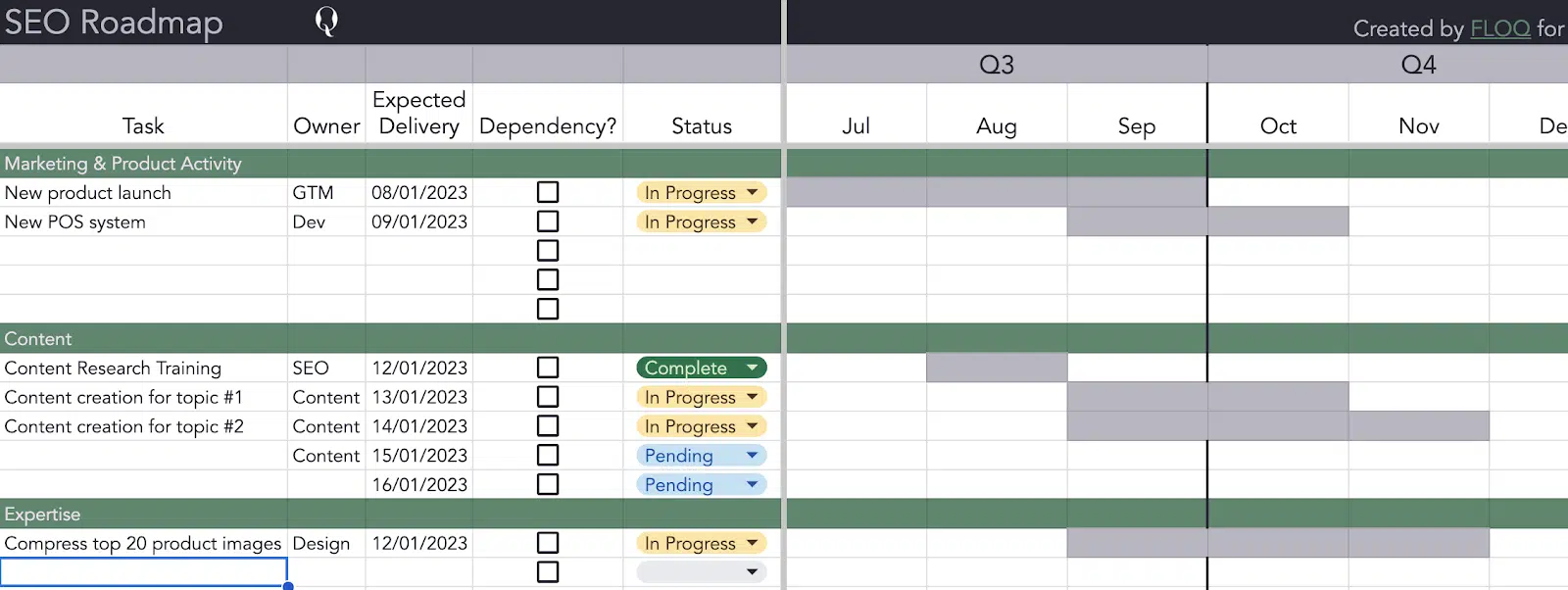How to evolve an SEO strategy: Key elements to review
Keep your SEO strategy dynamic with regular refreshes. Check out areas to audit when updating your plan each year.
An effective SEO strategy must evolve over time to account for changes within your company and the broader digital landscape. An annual review is key to keeping your approach up to date and results-driven.
This article outlines critical internal and external elements you need to assess when refreshing your SEO plan, from website changes to competitive shifts to algorithm updates.
You can evolve your SEO strategy with continuous shifts of priorities and changes that are reflected in a dynamic SEO roadmap, or you can develop a more defined annual or semi-annual process.
For this article, we’ll work under the assumption this is an annual review to determine if priorities have changed in the last year (i.e., waterfall, rather than agile, for those who think that way).
Internal elements to review
A year is a long time, and things can change internally, whether they are processes or priorities.
Before we shift our SEO strategy based on an external factor, we want to make sure the brand and the company can support it – and that it matters to the business.

Your SEO strategy implementation
Start by auditing what has successfully been implemented or what projects have been approved – from the first iteration of the SEO strategy translated into tactics through an SEO roadmap – and what has struggled.
If possible, you’ll also want to see what impact that resulted from those changes. This will allow you to start mapping out the particular elements that impact your website and potentially your industry.
Your website
As one of the key elements of your SEO strategy, you must understand any changes on your website’s backend.
If you’re lucky, you’ll be familiar with this anyway, because you’ll either be embedded as a part of the development team or across their workflow and on good terms with the product or program owners.
You also need to understand what’s changed on your website from a content perspective. A number of enterprise-level SEO tools have change records as a part of their software, or you could use tools like:
- Visual Ping
- Hexomatic
- Sken.io
Otherwise, you may be able to use the “Last modified” or “Last edited” history within your CMS if those fields are recorded.
Your products/offering
Your product and your company go through changes as well. Maybe this year, there was a fundamental shift from focusing on product A to launching and supporting product B.
Or maybe the goals, targets and mission of the business have shifted, and it’s less focused on gaining new customers, but about retaining existing business.
That fundamentally could shift both the content strategy and the technical focus of the website and should inform an evolution of your SEO strategy as well.
Your processes
Maybe a process has been improved and unblocked a lot of work you couldn’t get done in the last year, or potentially the reverse.
While not exhaustive, these are good places to start understanding how things within your control have changed in the last 12 months and how they’re likely to change in the next 12.
External elements
Understanding external changes involves assessing factors beyond your control. Determine whether immediate action is needed or if it’s better to address the issue before it becomes critical.
This may lead to a broader business discussion requiring leadership’s approval, so be prepared for a potentially time-consuming process.
Google algorithm updates or feature changes
This is an obvious one, but it’s worth stating: SEO strategies, to a certain extent, will always be reactive.
While a good SEO strategy will be near-impervious to shifts in Google’s algorithms, the evolution comes in anticipating and acting toward future changes in how people search. It’s seeing things that may be a small consideration now, but you see the threads becoming bigger, like the “Experience” in E-E-A-T or Google’s SGE.
What your competitors are doing
While I’m a follower of the infinite game in business, it doesn’t mean you shouldn’t pay attention to what happens in your market. Instead, it means not measuring your success by it.
If you find that most of your market has shifted to writing long-form, thought-leadership content, that’s at least worth tucking away in the corner of your mind. But whether you evolve your SEO strategy to address it depends on your wider goals.
Understanding the market landscape is different from reacting to it, and any evolution of your SEO strategy needs to be informed by an accurate, timely understanding of the market where you operate.
Chaos
One recommendation that has always stuck with me from Ian Lurie’s various strategy documents is to consider the chaos.
- What would happen if a new channel came in and disrupted the market?
- What if there was a global pandemic?
- What if you get fantastic media coverage?
- What if the iPhone had a split launch?
- What if Samsung had to recall its phones?
This thought exercise stretches your strategic muscles. It also helps you understand the edge cases and assess how resilient your processes and tactics are. Note how these edge cases would require you to shift or entirely change your strategy.
Look to the future
The evolution of the SEO strategy should include:
- Updating SEO goals and targets.
- Shifting any strategic pillars that are either internal or external reactions.
- Adding new strategic pillars based on the market landscape.
Armed with this up-to-date information, you’re well-positioned to evolve your SEO strategy and future-proof it by keeping the document live and loved.
Opinions expressed in this article are those of the guest author and not necessarily Search Engine Land. Staff authors are listed here.
Related stories
New on Search Engine Land